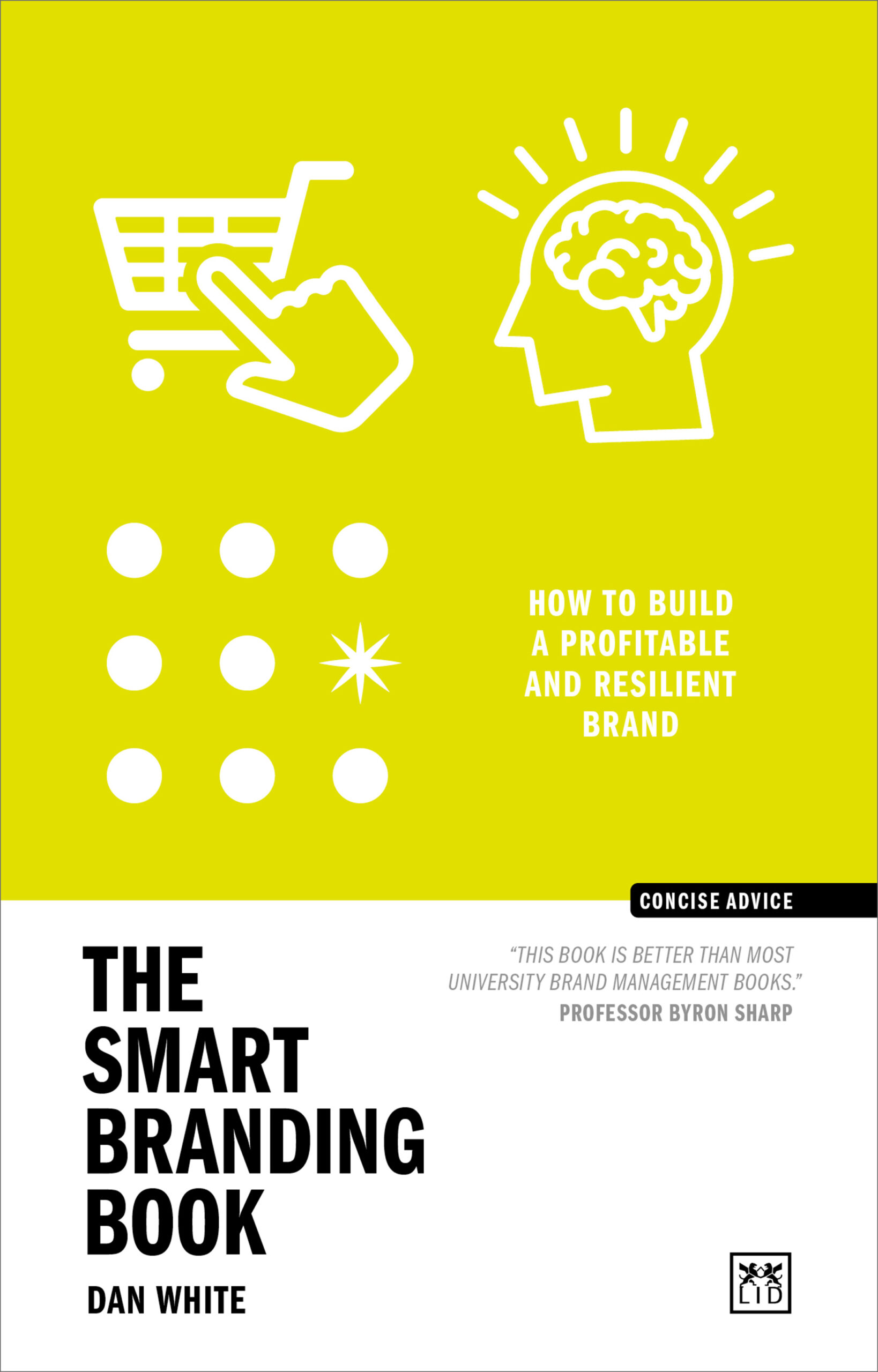|
How to Identify Your KPIs? with Dan White
How to Identify Your KPIs? with Dan White

By Guest Contributor Dan White
Author of The Smart Branding Book, Dan White, explains how you can pick the right Key Performance Indicators (KPIs) for your brand.
To manage your brand well, you will need to establish a set of key performance indicators – or KPIs. You and your colleagues must feel confident that the chosen metrics link to business success. They should include measures of physical availability, mental availability, behavioural sales drivers and user satisfaction.
Measures of physical availability include:
- Distribution
- Visibility in retail stores and/or on websites
- Visibility when people search for the category
- Uptake of the brand’s mobile app
- Price acceptability
Those for mental availability include:
- Category-prompted spontaneous brand mentions, and/or net mentions across the main category usage contexts
- Purchase consideration rating and/or ratings of how positive people feel towards the brand, how relevant it is to their needs, how unique it seems, whether it sets category trends (or similar)
- Levels of search for the brand (vs competitors)
- Mentions of the brand and/or uploads of pictures including the brand on social media (vs competitors)
Behavioural drivers of sales might encompass:
- Footfall per store and/or web traffic (or similar)
- Levels of first-time trials and/or acquisitions
- Annual penetration (size of customer base)
- Repeat purchase and/or retention rate (vs expected rate given the brand’s size)
Finally, user satisfaction might be measured through:
- Overall opinion in user testing (vs competitors)
- Feedback from mystery shoppers (people pretending to be shoppers, who report back on their experiences)
- Average review scores (vs competitors)
- Numbers of users accessing troubleshooting services
To set KPIs, you need a good understanding of what drives success in your category and the business strategy that will enable your brand to thrive. Consider a fast-food chain that has grown for decades by opening restaurants across a country. At some point, the brand will reach a ceiling in terms of physical availability. Future growth will depend on getting more people to visit its existing restaurants and/or getting them to visit for a wider variety of needs and occasions. For example, if people rarely visit the restaurant to have a coffee, an effective growth strategy might be to target coffee drinking by advertising the high quality, variety or value of the coffee it offers.

The KPIs for the campaign might include:
- The proportion of restaurants offering the product (an ‘Operational KPI’)
- Footfall per restaurant per day (a ‘Consumer Behaviour KPI’)
- Mentions of the brand when consumers are asked: “Which brands come to mind when you’re thinking of having a coffee break?” (a ‘Brand KPI’)
Brand and consumer behaviour KPIs need to be calibrated before they can be used to guide marketing decisions. Marketers need to know two things:
- How changes in KPIs translate into profit
- The investment that would be required to achieve these changes
These estimates are essential to produce a compelling business case.

They also allow marketers to illustrate the consequences of reducing the marketing budget.

Marketing mix modelling, also known as sales modelling, is a statistical approach to estimating the relationships highlighted in the illustrations above. It is based on what a specific brand has experienced historically. At least two years’ worth of weekly back data is needed. Some models include brand and consumer KPIs. Others quantify the relationship between marketing investments and business outcomes directly. Including brand and consumer KPIs helps the model to interpret the data patterns more accurately. It also provides clearer insights into how to achieve target business outcomes.
If you don’t have the data you need to develop your own model, you can use results from other brands to estimate the relationships. Market research companies and academics publish aggregated data that provides an indication of what a brand might achieve from its investments. For example, Dominique Hanssens has compiled results from hundreds of academic studies. He has established how changes in marketing spend typically translate into business outcomes. On average, a 1% change in spend on efforts to increase distribution results in a sales change of between 0.6% and 1.7%. For sales calls, the sales change is 0.3%. For advertising, it is 0.1% for an average established brand. However, this can increase to 0.9% for new brands or strong new products from established brands (Pauwels et al. 2004).
These ratios are called ‘sales elasticities.’ To determine which activities are the best value for your brand, you need to estimate their elasticities and compare their costs.
If you have access to the necessary data, developing a marketing mix model for your brand is usually worth the time and money. Including brand and consumer behaviour metrics within the model makes it even more useful. It will tell you which brand and consumer KPIs have the biggest impact on your business outcomes and which elements of the marketing mix to focus on. A sophisticated sales model reveals the relationships between marketing investments, brand and consumer KPIs, and business outcomes.

If the relevant data is available, additional ‘driver analyses’ can make the marketing task clearer. These analyses identify the specific brand perceptions that drive brand consideration most effectively and which aspects of the user experience have the greatest influence on satisfaction.
ABOUT THE AUTHORS
 Dan White is a trainer and consultant who has worked in the marketing and branding sector for over 30 years. He was previously Head of Expertise and MD of Corporate Development at Kantar and is the author of The Soft Skills Book, The Smart Marketing Book and The Smart Branding Book (all published by LID). He is based in the UK.
Dan White is a trainer and consultant who has worked in the marketing and branding sector for over 30 years. He was previously Head of Expertise and MD of Corporate Development at Kantar and is the author of The Soft Skills Book, The Smart Marketing Book and The Smart Branding Book (all published by LID). He is based in the UK.
Suggested Reading
 The Smart Branding Book presents in a concise fashion the latest thinking and methods for successful branding. Clear and accessible, it contains real-life examples from business, practical frameworks, and inspiring illustrations. It explains what branding really is, why a brand is so critical to success in business, and how to maximize the growth of your current and future products/services through branding.
The Smart Branding Book presents in a concise fashion the latest thinking and methods for successful branding. Clear and accessible, it contains real-life examples from business, practical frameworks, and inspiring illustrations. It explains what branding really is, why a brand is so critical to success in business, and how to maximize the growth of your current and future products/services through branding.
More information
